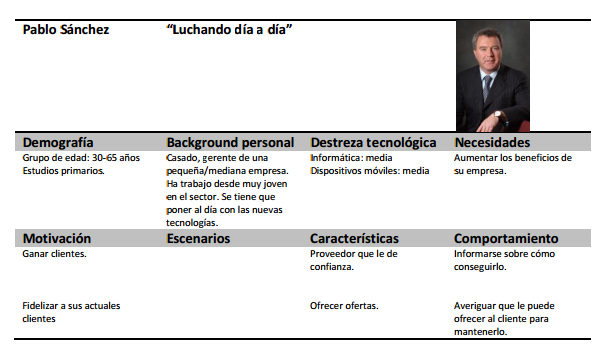Written by Merche Martínez
There are different techniques to know the characteristic features of the target audience of a Web site, in this article I am going to focus on the technique of building personas.
First of all, we must distinguish between the term “personas” in Spanish and personas in 
Advantages of using personas in a Web project
Defining user profiles as personas has the advantage of ensuring that we do not lose reference to the project objectives while maintaining the needs of the users.
They also serve to avoid distractions generated by the experience of the members of the study group or external agents, only the information obtained for the process of creating people will be taken into account.
For the studio team, creating personas helps improve customer understanding, generally reduces design/redesign cycles and most importantly improves product quality.
Definir el perfil de usuario a través de stakeholders.
Stakeholders are those people or organizations that affect or are affected by the Web project, they can be employees, suppliers, customers, etc. of the company. They are the ones who will provide us with user information, through interviews focused on obtaining information about users based on their personal experience.
Interviews should be focused on obtaining as much useful information about the users of the site, we are interested in knowing who they are, what they are like, what they want and how and when they want it.
After analyzing the data obtained in the interviews, characteristics, objectives, motivations, user needs, etc., several groups can be created and the different types of users can be distinguished.
If the groups created maintain different objectives and characteristics, we move on to the key step of creating personas, which is none other than humanizing the defined user profile. For this purpose, we provide each group of identified users with data of an invented person, name, age, studies, characteristics, hobbies and even a photograph that defines the created profile.
At this point we see that this technique can help us in the classification, identification and description of the user of a Web site. This user, who may or may not exist, will give us answers to questions such as: What is the user looking for in our Web site? can you find what you are looking for?
I invite you to try it and tell us about your experience!
